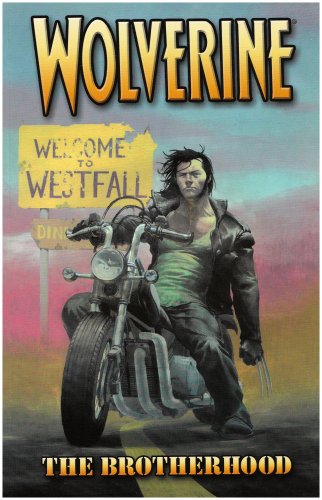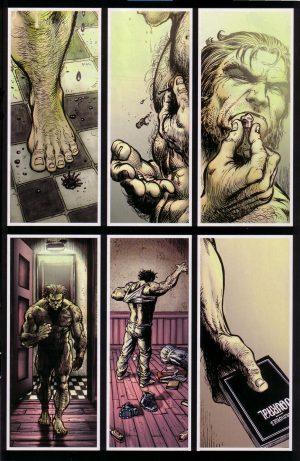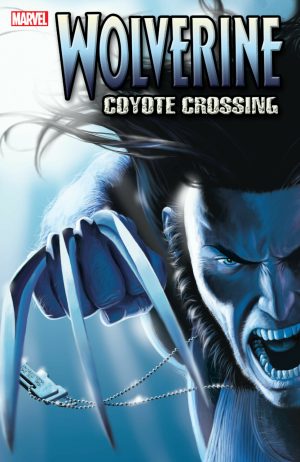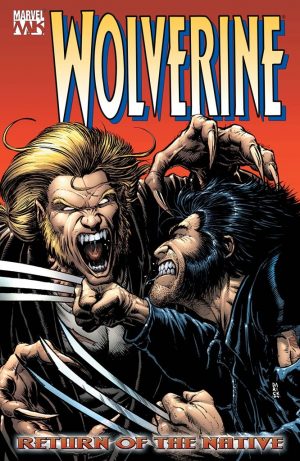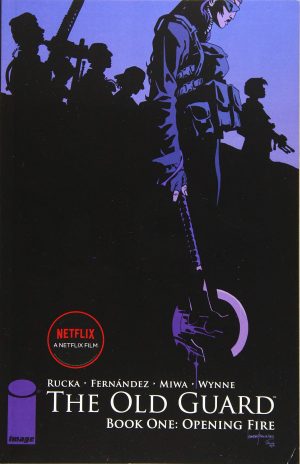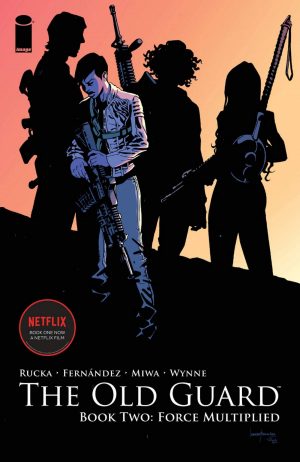Review by Karl Verhoven
When Greg Rucka and Darick Robertson began their Wolverine stories it was a fresh start in a relaunched title under the Marvel Knights imprint, more obviously aimed at an adult audience. Their opening sequence of a solitary, brooding Wolverine minding his own business in a coffee shop is a statement. He’s in civvies, not a costume, and is drawn by Robertson as a hunched bulk, almost deformed, isolated by appearance as much as choice. There’s not a mention of the X-Men, or indeed any other superhero connection, but they establish this is a man used to violence.
Robertston instils the mood, but he’s not capable of keeping Wolverine looking consistent, and is better at drawing Wolverine portraits than the full figure. At times he resembles Shannon Wheeler’s self-caricature from Too Much Coffee Man, and at times the X-Men’s Beast out of costume. That contradiction runs all the way through Robertson’s art, as if he can’t decide who his influence should be. Richard Corben, Steve Dillon and, strangely Barry Windsor-Smith are channelled in places, but Robertson’s not their match. Where he’s good is in accentuating that Wolverine is stunted when set beside almost everyone he meets, an impression strengthened by only rarely having him stand straight, and by having him exude an air of menace.
Rucka does this also, initially via the coffee bar waitress christening him “Mean Man”, but then via the more familiar method of actions speaking louder than words. Of course, words being Rucka’s stock in trade, he has some terse one-liners for Wolverine, but along with ditching the costume he ditches the powers. Sure, he makes use of the rapid healing, and heightened senses, but there’s barely any use of claws over the first four chapters. Rucka’s Wolverine is a feral brawler. “What is that…. Is that some kind of cat?” is the comment of one thug as Wolverine bursts through in the dark, and that’s the way we see him also.
It’s unusual experiencing Rucka writing a story without a woman as the lead character, but two different women feature in supporting roles, one of them less convincingly than expected from Rucka in being torn between fear and attraction. She’ll be back in Coyote Crossing.
The full mutant experience returns in the final, and weakest chapter. What had been a taut, TV style action drama becomes a dull philosophical discussion. It’s an interesting thought as a coda to a story in which Wolverine hasn’t held back, but doesn’t ring true because Wolverine’s never previously bothered much with either conscience or regret. The opening four chapters are the meat, though, as Wolverine follows a trail to avenge a wrong.
Brotherhood was later combined with Coyote Crossing and Return of the Native as Wolverine by Greg Rucka: The Ultimate Collection.
